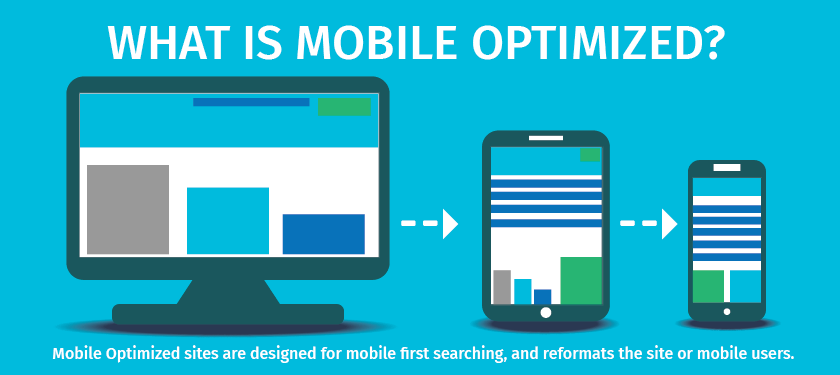
The Ultimate Guide to Mobile Optimization: Techniques for Enhancing Internet Site Performance on Smartphones and Tablets
The techniques for improving web site performance on mobile platforms go past plain adjustment; they incorporate a comprehensive approach that entails responsive layout, speed optimization, material approaches, and user experience enhancements. By diving right into the intricacies of mobile optimization, businesses can not only satisfy user expectations but likewise stay ahead in an affordable digital landscape.
Significance of Mobile Optimization
Mobile optimization plays an essential role in improving user experience and driving conversion rates in the ever-evolving electronic landscape. With the enhancing use smartphones and tablet computers for searching the net, making sure that web sites are maximized for mobile devices has become imperative for businesses - Mobile Optimization. A mobile-optimized website not just adjusts flawlessly to various screen dimensions yet additionally loads rapidly, offering customers with a smooth and satisfying browsing experience
In today's hectic globe, individuals expect instant access to details on the move. A website that is not enhanced for smart phones dangers shedding potential customers because of slow down loading times or an inadequate user interface. By buying mobile optimization, companies can cater to the needs of their mobile audience, causing greater engagement and raised conversions.
Furthermore, search engines like Google prioritize mobile-friendly web sites in their positions, making mobile optimization crucial for improving visibility and drawing in organic website traffic. Mobile Optimization. Overall, the value of mobile optimization can not be overstated, as it straight influences customer satisfaction, conversion prices, and total business success in the digital realm
Responsive Design Techniques
Executing responsive design methods guarantees that internet sites dynamically change their design and material based upon the user's tool display size, offering a consistent user experience throughout numerous systems. Among the most common methods made use of in receptive layout is developing fluid grids that enable content to resize proportionally to the display size. This makes sure that components on the web page maintain their loved one spacing and setup, optimizing the watching experience for individuals on various devices.
Additionally, making use of versatile images that can scale with the dimension of the viewport assists stop images from being chopped or distorted on smaller screens. CSS media questions play a critical role in receptive layout by allowing programmers to apply details designs based on the tool features such as display size, height, and orientation. By leveraging media inquiries, sites can adjust their format and style to match mobile phones, tablet computers, and desktop screens seamlessly.
Integrating receptive style strategies not just improves customer experience but likewise contributes to improved internet search engine rankings, as internet search engine like Google prioritize mobile-friendly internet sites in their mobile search results page. By welcoming receptive style, web sites can deal with the diverse requirements of customers accessing content on my website a range of devices, inevitably driving engagement and conversions.
Speed and Performance Optimization

One trick method is optimizing images and multimedia material to decrease data sizes without endangering high quality. Compressing pictures, leveraging contemporary photo styles like WebP, and lazy loading offscreen images work techniques to speed up tons times (Mobile Optimization). Moreover, decreasing HTTP requests, leveraging internet browser caching, and minimizing server response times are essential action in boosting performance.
Carrying out a content shipment network (CDN) can additionally dramatically increase internet site speed by dispersing content throughout several web servers around the world, decreasing latency for individuals accessing the site from various places. Prioritizing vital above-the-fold web content and deferring non-essential manuscripts can even more improve viewed performance. By concentrating on speed and performance optimization, web sites can supply a smooth and rewarding user experience on mobile phones.
Mobile-Friendly Content Approaches
Mobile-friendly content approaches entail customizing the presentation of info to fit the smaller screens and on-the-go nature of smartphone and tablet computer users. Additionally, breaking up web content into much shorter paragraphs and utilizing bullet factors can help improve readability and make it easier for users to consume details swiftly.
Integrating engaging visuals, such as photos and video clips enhanced for mobile viewing, can additionally improve the total customer experience. These visuals should be pertinent, high-grade, and tons rapidly to avoid users from shedding passion. Incorporating interactive elements like tests, polls, or studies can improve individual engagement and motivate active involvement.
User Experience Enhancements
Building on the structure of mobile-friendly web navigate to this website content methods, improving individual experience requires enhancing every touchpoint to make certain seamless communication and fulfillment for mobile individuals. One important facet of enhancing customer experience on mobile devices is guaranteeing quickly loading times. Customers anticipate sites to pack quickly on their mobile phones and tablet computers, and any kind of delays can result in irritation and enhanced bounce prices. Applying responsive style is another vital consider enhancing customer experience. Receptive style ensures that web sites adjust to numerous display sizes and resolutions, giving a consistent and easy to use experience throughout various tools.
Along with speed up and receptive style, streamlining navigation is vital for a favorable individual experience. Clear and user-friendly navigation menus, popular search bars, and tactically put call-to-action buttons can aid customers conveniently locate what they are seeking on a mobile website. Enhancing forms for mobile users by minimizing the variety of areas and using auto-fill features can also boost the general individual experience. By focusing on these individual experience improvements, sites can efficiently involve and maintain mobile visitors.
Conclusion
To conclude, mobile optimization is critical for her response improving web site efficiency on smartphones and tablet computers. By executing receptive layout strategies, enhancing rate and performance, developing mobile-friendly web content, and boosting user experience, organizations can efficiently get to and engage with their mobile audience. It is essential for internet sites to adapt to the boosting mobile usage trends in order to continue to be competitive in the electronic landscape.